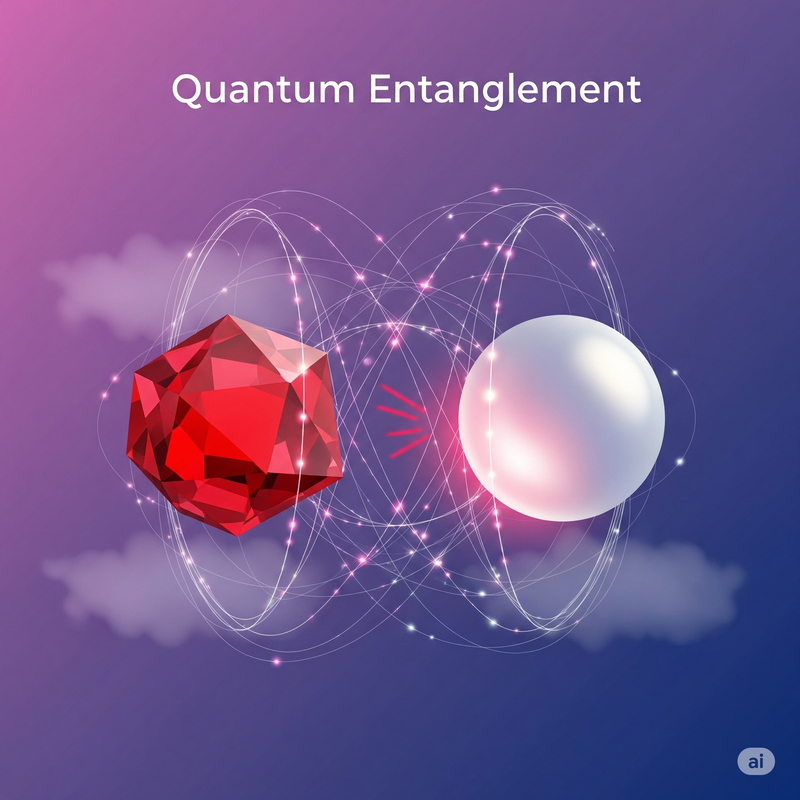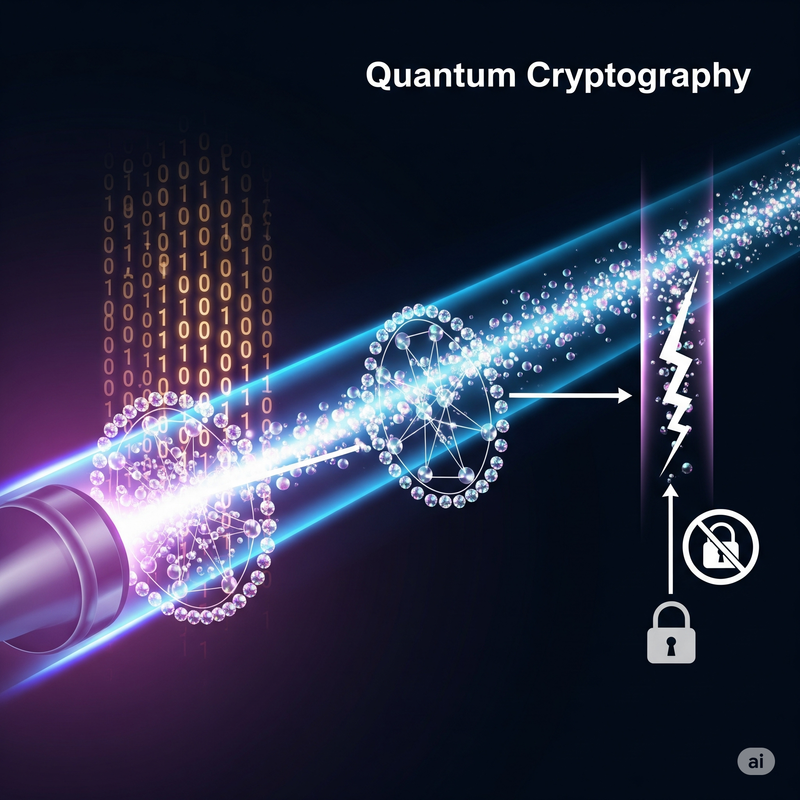Quantum Internet: The Next Leap in Communication Technology?
Quantum Internet: The Next Leap in Communication Technology?
The internet has revolutionized how we live, work, and communicate. But what if the next revolution wasn't just about speed or bandwidth, but about fundamentally changing the very fabric of how information is transmitted and secured? Enter the tantalizing prospect of the Quantum Internet, a network that promises unprecedented levels of security and could unlock entirely new possibilities in communication and computation. Is this the next giant leap in communication technology?

1. What is the Quantum Internet?
Unlike the classical internet we use today, which relies on bits representing 0s or 1s, the Quantum Internet leverages the principles of quantum mechanics. It aims to transmit information encoded in qubits, which can exist in a superposition of both 0 and 1 simultaneously. This fundamental difference opens the door to unique capabilities beyond the reach of our current internet.
2. Key Technologies Behind It
Several groundbreaking technologies are crucial for building a functional Quantum Internet:
- Quantum Entanglement: This bizarre yet powerful phenomenon links two or more qubits together in such a way that they share the same fate, regardless of the distance separating them. Measuring the state of one instantly determines the state of the other. Entanglement is a key ingredient for secure key distribution and potentially for future quantum teleportation.

- Quantum Repeaters: Just like classical internet signals degrade over long distances, quantum signals (often carried by photons) also suffer from loss. Quantum repeaters are devices designed to extend the distance over which quantum information can be reliably transmitted by overcoming these losses through techniques like entanglement swapping and quantum error correction.

- Photon-based Communication: Photons, or particles of light, are often the chosen carriers of quantum information due to their ability to travel long distances (especially through fiber optic cables or free space) and their relatively weak interaction with the environment, which helps preserve their delicate quantum states.
3. Why It Matters
The development of a Quantum Internet holds immense significance for several reasons:
- Ultra-Secure Data Transmission: One of the most touted applications is quantum cryptography. By leveraging the principles of quantum mechanics, particularly the no-cloning theorem and the effects of measurement on quantum states, the Quantum Internet promises virtually unbreakable secure communication. Any attempt to eavesdrop on a quantum communication channel would inevitably disturb the quantum state, alerting the communicating parties to the intrusion. This has profound implications for sensitive data transmission in areas like banking, government, and cybersecurity.
- Faster-than-Light Implications (Perceived, Not Literal): While quantum entanglement doesn't allow for the transfer of information faster than light (violating Einstein's theory of relativity), the instantaneous correlation between entangled particles could lead to novel communication protocols that feel instantaneous for certain applications, though the setup and interpretation still rely on classical communication within the speed of light limit.
4. Current Progress
The Quantum Internet is no longer purely theoretical. Significant progress is being made globally:
- China’s Micius Satellite: China has launched the Micius satellite, which has successfully demonstrated quantum key distribution over long distances in space, showcasing the feasibility of satellite-based quantum communication networks.
- Research at MIT, Google, IBM, etc.: Leading research institutions and tech giants like MIT, Google, and IBM are actively involved in developing key components of the Quantum Internet, including more stable qubits, efficient quantum repeaters, and integrated quantum photonic circuits.
- International Testbeds: Various countries and regions are establishing terrestrial quantum communication testbeds to explore the practical challenges and applications of building a Quantum Internet infrastructure.

5. Challenges Ahead
Despite the exciting advancements, several significant challenges remain before a fully functional global Quantum Internet becomes a reality:
- Infrastructure: Building the necessary infrastructure, including the deployment of quantum repeaters and specialized hardware over vast distances, will be a monumental and costly undertaking.
- Cost: The current technologies involved in generating, manipulating, and detecting quantum states are expensive, making widespread deployment a significant economic hurdle.
- Stability of Quantum States: Qubits are notoriously fragile and susceptible to decoherence (loss of their quantum properties) due to interactions with their environment. Maintaining the stability of quantum states over long distances and through complex networks is a major technical challenge.
6. Future Outlook
The Quantum Internet, while still in its early stages, holds the potential to fundamentally reshape our technological landscape. Its promise of ultra-secure data transmission could revolutionize fields like online banking, government communications, and military intelligence. Furthermore, the ability to connect quantum computers over a network could unlock unprecedented computational power for applications in artificial intelligence, drug discovery, and materials science. While the path ahead is filled with technical and economic hurdles, the ongoing global research and development efforts suggest that the next leap in communication technology might indeed be quantum.
Explore More:
- The Future of Nuclear Fusion: Unlimited Clean Energy?
- AI Weather Control: Can We Predict the Unpredictable?
Contact Author:
More Information:
What are your thoughts on the future of the Quantum Internet? Share your opinions in the comments below!
Disclaimer: This blog post provides a general overview of the Quantum Internet. The field is rapidly evolving, and for the latest research and technical details, please refer to scientific literature and reputable sources.
Comments
Post a Comment